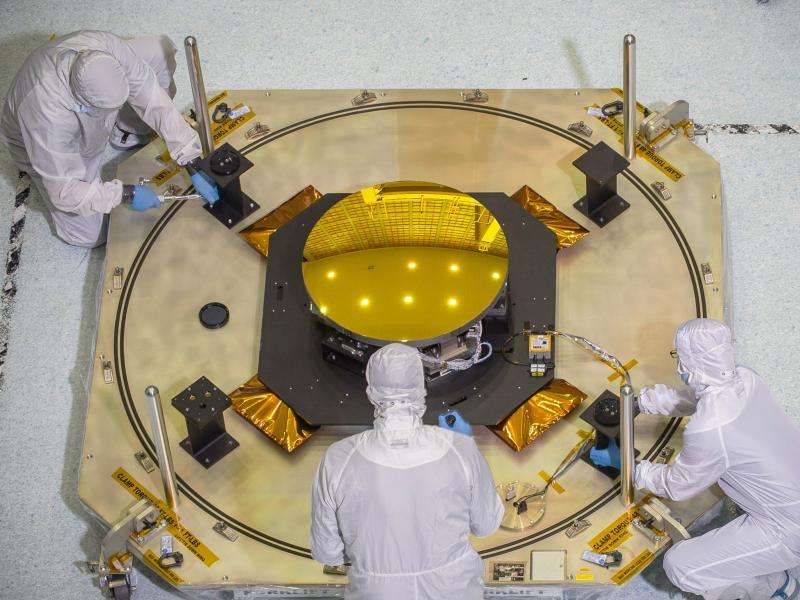Video: NASA's Webb 'strutting its stuff'

The newest video in the "Behind the Webb" series, called "Strutting its Stuff," provides a look at three "struts" or poles that fold and unfold the secondary mirror on the James Webb Space Telescope. The video series takes viewers behind the scenes to understand more about the Webb telescope, the world's next-generation space observatory and successor to NASA's Hubble Space Telescope. Designed to be the most powerful space telescope ever built, Webb will observe the most distant objects in the universe, provide images of the first galaxies formed and study unexplored planets around distant stars.
In "Strutting its Stuff," Andy Carpenter, one of the mechanical integration engineers at NASA's Goddard Space Flight Center in Greenbelt, Maryland, talks about how the mirrors will unfold. "We deploy three struts that are much like a tripod, and the secondary mirror will sit above the backplane."
Because the Webb telescope is too large to fit into a rocket in its final shape, engineers have designed it to unfold like origami after its launch. That unfolding, or deployment, includes the mirrors on the observatory, too. The segmented primary mirror collects light from the cosmos and directs it to the secondary mirror, which sends it additional smaller mirrors before it reaches the cameras and spectrographs.
The three struts are almost 25 feet long, yet are very strong and light-weight. They are hollow composite tubes, and the material is about 40-thousandths of an inch (about 1 millimeter) thick. They are built to withstand the temperature extremes of space.
During the video, viewers see a test of the struts being deployed in an environment that replicates the zero gravity of deep space.
Provided by NASA




















